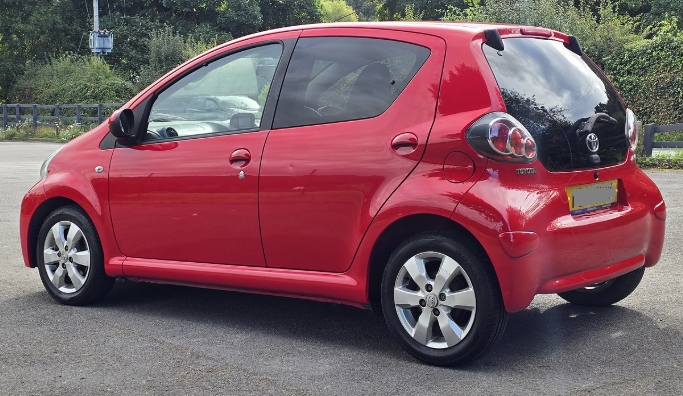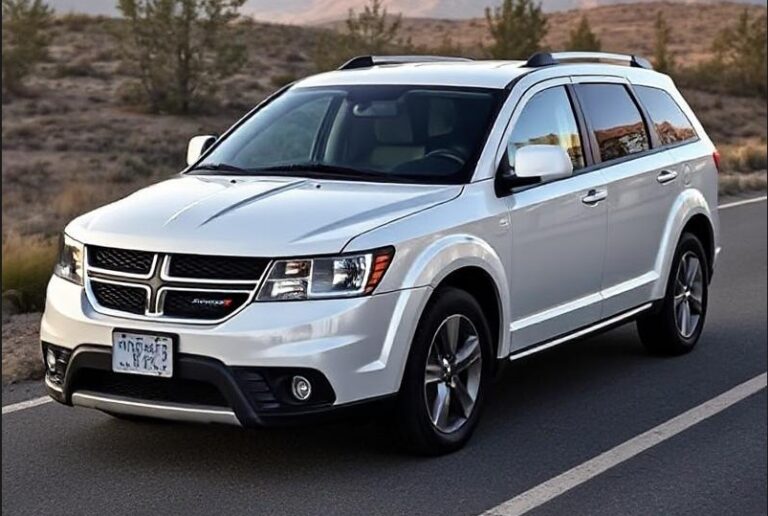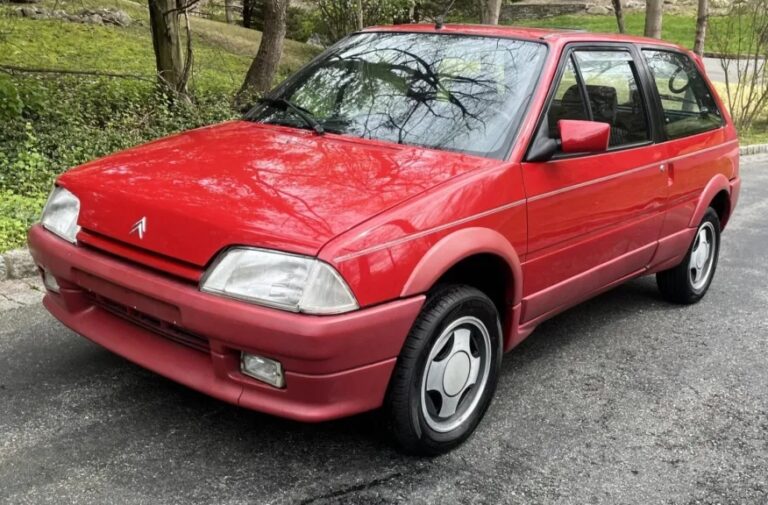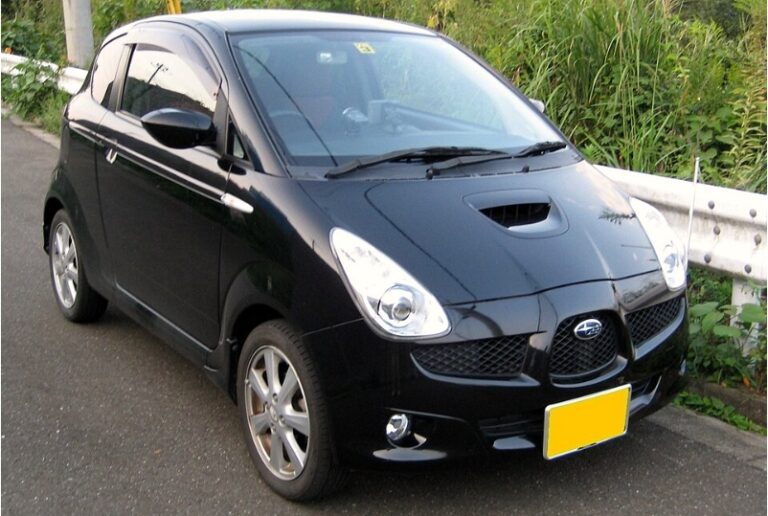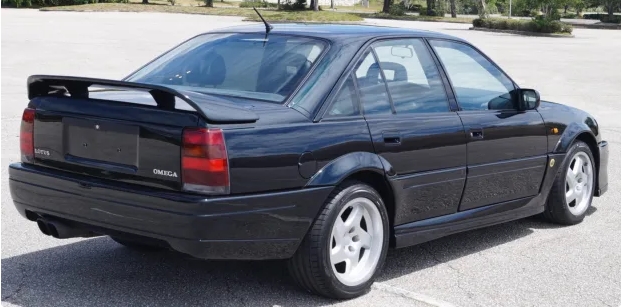The Little Giant: The Evolution of the Toyota Aygo
In the landscape of modern motoring, few cars have so perfectly encapsulated the spirit of their time and segment as the Toyota Aygo. For nearly two decades, this diminutive city car was a ubiquitous sight on Europe’s congested streets, a symbol of youthful energy, economic sense, and clever industrial collaboration. Its journey from a spartan, budget-friendly runabout to a style-conscious, tech-laden crossover is a fascinating case study in automotive evolution, reflecting changing consumer tastes, tightening regulations, and the constant drive for innovation. This is the story of the Toyota Aygo.
The Genesis: The B-Zero Project (Early 2000s)
The story of the Aygo begins not in Japan, but with a landmark European partnership. In the early 2000s, Toyota and the PSA Group (Peugeot and Citroën) identified a shared challenge: developing a profitable A-segment city car. The costs of designing an entirely new platform for a low-margin vehicle were prohibitive for a single manufacturer. The solution was the “B-Zero” project, a joint venture that would see the three brands collaborate on a single platform and build their respective models in a new, shared factory.
This collaboration led to the creation of the Toyota Peugeot Citroën Automobile (TPCA) plant in Kolín, Czech Republic. From this factory would emerge a trio of mechanically identical, yet stylistically distinct, city cars: the Peugeot 107, the Citroën C1, and the Toyota Aygo. Toyota, renowned for its engineering and reliability, was tasked with development and production management. The name “Aygo” itself was derived from “I-go,” symbolising freedom and mobility.
First Generation (AB10): The Cheeky Original (2005–2014)
Launched at the 2005 Geneva Motor Show, the first-generation Aygo immediately stood out. Its design was simple, friendly, and unpretentious. Characterized by its short overhangs, large, expressive headlights, and a distinctive all-glass tailgate, the Aygo had a cheeky and accessible appeal. The design was not just about aesthetics; the glass hatch was a clever cost-saving measure that also provided a modern look.
Powertrain and Performance: Under the bonnet lay the heart of the Aygo: a 1.0-litre, three-cylinder petrol engine (the 1KR-FE VVT-i). This lightweight, aluminum engine produced a modest 67 bhp but was celebrated for its characterful thrum, impressive fuel economy (regularly exceeding 60 mpg), and low CO2 emissions, which placed it in the lowest road tax bands in many countries. A five-speed manual gearbox was standard, with an optional Multi-mode Manual Transmission (MMT), an automated manual, also available. For a brief period (2006-2007), a 1.4-litre diesel engine sourced from PSA was offered, but its higher cost and minimal fuel economy advantage saw it quickly discontinued.
Trim Levels (Pre-facelift, 2005-2009): The initial trim structure was straightforward, reflecting its budget-focused mission.
Aygo: The entry point. It was truly basic, with unpainted bumpers, steel wheels, and wind-up windows. It lacked a radio, central locking, and even a rear parcel shelf as standard.
Aygo+: The volume seller. This added essential comforts like body-coloured bumpers and mirrors, remote central locking, electric front windows, and a CD player with an auxiliary input.
Aygo Sport: Aimed at a younger demographic, this trim added 14-inch alloy wheels, a rev counter integrated into the instrument binnacle, and front fog lights for a sportier look.
Special Editions: Toyota quickly realized the Aygo’s appeal as a fashion accessory. Editions like Aygo Black (with leather/Alcantara seats) and Aygo Blue (with Bluetooth connectivity) offered unique paint and interior combinations.
First Facelift (2009–2012): A Subtle Refinement In 2009, the Aygo received its first facelift. The changes were subtle, focusing on a redesigned front bumper that incorporated a small grille, aligning it with the contemporary Toyota family look. The rear light clusters were also subtly revised. More importantly, Toyota engineers tweaked the 1KR-FE engine and aerodynamics to lower CO2 emissions even further, dropping below the critical 100g/km threshold in some versions, making it free from London’s Congestion Charge and certain road taxes.
The trim levels were rebranded to reflect a greater focus on features:
Aygo: Remained the spartan base model.
Aygo Go / Aygo Move: These popular special editions featured a removable TomTom satellite navigation system integrated into the dashboard, a significant selling point in the pre-smartphone era.
Aygo Ice: As the name suggests, this trim made air conditioning a standard feature.
Aygo Black & Blue: These style-focused editions continued, often bundling alloys and other desirable features.
Second Facelift (2012–2014): The Final Form The final update for the first generation arrived in 2012. This was a more significant cosmetic change, introducing Toyota’s “Under Priority” design language. A large, aggressive trapezoidal lower grille dominated the front end, and LED Daytime Running Lights (DRLs) were integrated into the bumper, giving the car a much more modern and assertive presence. Interior trim materials were also slightly upgraded.
Trim levels were once again revised:
Aygo Active / Active Plus: Formed the core of the range.
Aygo Mode: Offered more customization and style options.
Aygo Fire & Ice: These popular contrasting special editions returned, with the “Fire” model in vibrant orange with black details, and “Ice” in white with silver accents.
Second Generation (AB40): The “X” Factor (2014–2022)
By 2014, the city car market had changed. Rivals like the VW Up! had raised the bar for interior quality, and buyers now demanded personality and technology, not just low running costs. The second-generation Aygo, unveiled at the 2014 Geneva Motor Show, was a radical departure.
Design and Philosophy: Built on a heavily revised version of the original platform, the new Aygo was designed under the “J-Playful” philosophy, inspired by Japanese youth culture. Its defining feature was the bold, contrasting “X” graphic that dominated the front end, stretching from the A-pillars down through the grille. This wasn’t just a design quirk; it was the cornerstone of a new emphasis on personalization. The front ‘X’, front bumper inserts, and alloy wheels could all be specified in different colors, allowing owners to create a car that felt uniquely theirs.
The interior was completely transformed. While hard plastics remained, the design was far more contemporary, centred around a 7-inch “x-touch” multimedia system that featured a reversing camera as standard on most trims. The car was also slightly longer, with improved chassis rigidity and suspension tuning that delivered a more refined ride.
Powertrain: The venerable 1.0-litre, three-cylinder 1KR-FE engine was carried over but significantly updated for improved efficiency and refinement, now producing 69 bhp. It was mated to a standard five-speed manual or an improved “x-shift” automated manual transmission.
Trim Levels (The “X” Family): The trim structure was completely overhauled to reflect the new focus on personality.
x: The new base model, equipped with DRLs and USB connectivity but still on steel wheels and without air conditioning.
x-play: The heart of the range and the most popular choice. It added 15-inch steel wheels (with covers), air conditioning, Bluetooth, and the x-touch multimedia system could be optioned.
x-pression: The high-spec model, featuring 15-inch alloy wheels, the x-touch system as standard, part-leather seats, and automatic air conditioning.
x-cite: A recurring special edition that changed its vibrant, exclusive color scheme each year (e.g., Orange Twist, Cyan Splash, Magenta Fizz), with matching interior and exterior accents. It was the ultimate expression of the Aygo’s playful nature.
x-clusiv: This range-topping trim offered a more sophisticated, premium look with a specific paint finish, upgraded alloys, and enhanced interior trim.
Facelift (2018–2022): Refining the X A mid-life facelift in 2018 saw the “X” frontal design evolve from a 2D graphic into a more integrated, 3D element. New headlamp and taillight designs with distinctive LED signatures further sharpened the look.
Crucially, Toyota focused on improving refinement, adding more sound-deadening material to reduce road and engine noise. The engine was updated again to meet Euro 6.2 emissions standards, with power slightly increased to 71 bhp.
A major addition was the introduction of the Toyota Safety Sense package as an option on most models, bringing advanced driver aids like a Pre-Collision System (PCS) and Lane Departure Alert (LDA) to the city car segment, a significant step forward for safety.
The trim levels were slightly realigned:
x-play: Remained the core model, now with more standard equipment.
x-trend: A new, stylish mid-range model that replaced x-pression.
x-clusiv and x-cite: Continued their roles as the premium and flamboyant flagship models.
.
THIS is GOOD stuff if your car is in need:

.
The End of an Era: The Aygo X (2022-Present)
By the early 2020s, the A-segment faced an existential crisis. Increasingly stringent emissions regulations made small petrol engines expensive to develop, while consumer preferences were shifting dramatically towards SUVs and crossovers. The B-Zero partnership concluded, and PSA (now part of Stellantis) moved away from the segment.
Toyota, however, saw an opportunity. Instead of abandoning the city car, they reinvented it. The Aygo X (pronounced Aygo Cross), launched in 2022, was the answer. No longer a joint-venture product, it is built on Toyota’s own GA-B platform (shared with the Yaris and Yaris Cross).
The Aygo X is a complete transformation. It evolved from a hatchback into a compact urban crossover, with a significantly raised ride height, rugged black plastic body cladding, and a far more muscular stance. While it retains the 1.0-litre three-cylinder engine and a compact footprint, its design, platform, and market positioning are entirely new. It represents the Aygo adapting to survive, carrying the name and spirit of its predecessors into a new automotive era.
Legacy
The Toyota Aygo’s evolution from 2005 to 2022 is a story of adaptation and success. It began life as an honest, simple, and brilliantly conceived solution to urban mobility. Over two generations and multiple facelifts, it transformed into a canvas for personal expression, embracing technology and style without losing its core virtues of efficiency and reliability. Selling over 1.2 million units in Europe, it outlasted its French siblings and became a dominant force in its class. The Aygo proved that a small car could have a huge personality, and its journey from a humble hatch to a bold crossover ensures its name will remain a part of the urban landscape for years to come.
